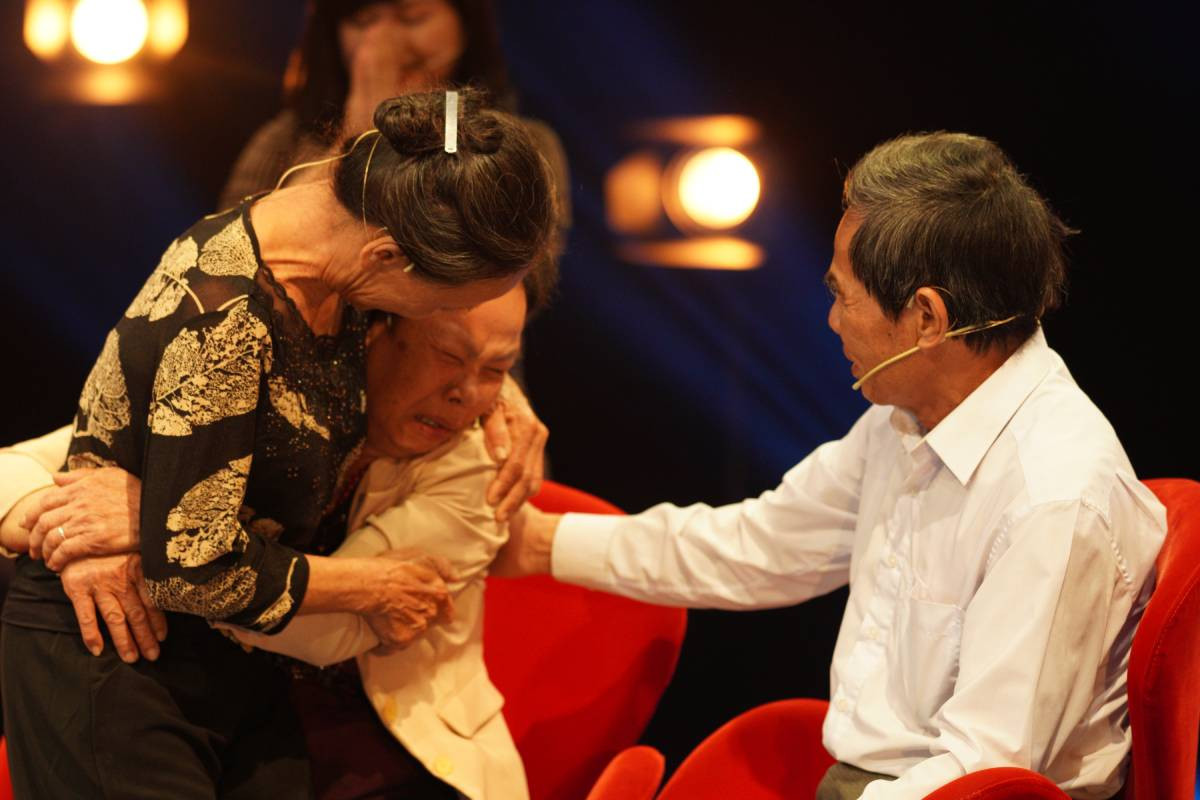
In 1969, Tam (real name Tran Thi Dung), living with her parents by the Vu Gia River in Dai Quang commune, Dai Loc district, in Quang Nam province, was sent to her aunt’s house in Da Nang for a visit. It was the last time she would see her parents. A short trip turned out to last 60 years.
A life of wandering
One morning in 1969, seeing her aunt and uncle board a vehicle, young Tam ran after them. Losing sight of them, she boarded a ferry, then a fruit truck, drifting to Hue T-junction.
From this moment, the 9-year-old’s life took a completely different path. A ticket inspector later adopted Tam. Due to their poverty, she couldn’t attend school.
At 17, following a local official’s advice, she joined the Youth Volunteer Force, helping build Vinh Trinh Reservoir. In 1980, she moved to Duc Co, Gia Lai, to reclaim land and build a new economic zone, and has lived there since.
There, she married a soldier from Quang Nam, and had four children.
Later, her husband suffered a stroke, bedridden for eight years, while she battled cancer. She worked in a rubber plantation and worked for hire to feed her children and medical expenses. Their house was built partly with aid from the veterans’ association.
Her deepest pain wasn’t illness but the emptiness in her heart. She couldn’t recall her hometown’s exact location, lacking any documents or remembrances from her parents.
She could remember that tobacco was grown in her hometown, that there was a river, and that oranges grew across the river bank.
No one could help Dung find her family. The only place she remembered clearly was “Hue T-junction.”
“All others have parents, but I had no one. I just want to call out to my parents once. If I find my family, I will cry and faint,” she once tearfully told a neighbor.
Family’s hopeless search
Upon learning of their daughter’s disappearance in 1969, Nghien, Dung’s mother, rushed to Da Nang, enlisting relatives to search. For days, she inquired everywhere but found no clues.
Nghien doubted her sister (Dung’s aunt) had sold her daughter, carrying that resentment until her death. Before passing, she told her children: “If possible, find your sister. I believe she’s still alive somewhere.”
But poverty, wartime chaos, and limited communication left Dung’s siblings helpless, unable to locate her despite their efforts.
Dung and her husband had no close relatives. They only had a former commander, Quach Duc Thuc from Thanh Oai, Hanoi, whom they considered a brother.
Thuc organized a wedding for Dung and her husband. He also was a representative at the weddings of their four children. He urged Dung to send a letter to the “Nhu Chua He Co Cuoc Chia Ly’ (Like There Was Never a Separation) program to ask for help to seek her relatives.
It was the right decision.
On reunion day, Dung embraced her family members, sobbing: “Why didn’t you look for me?” The question brought everyone to tears.
“I didn’t dare to think our family members were still alive. I’m so happy,” Dung choked out, introducing her four children to her brothers and sisters.
Hugs, holding hands, and calling each other with childhood names erupted on the stage of Nhu Chua He Co Cuoc Chia Ly. Her parents had passed away, and her dream of seeing them had not come true, but reuniting with her siblings was a miracle.
“You know, Mom left a top tuft of hair on my head back then,” the sisters laughed and reminisced, holding hands. Smiles mingled with tears, but all were emotions of joy after nearly 60 years adrift.
A playful trip, a moment lost, but family bonds never faded. It took nearly a lifetime to find each other again.
After 17 years of broadcasting across TV channels, Nhu Chua He Co Cuoc Chia Ly has built up a valuable database for reconnecting seekers and the lost. On the website haylentieng.vn, users can search for information about missing relatives by entering names, birth years, or hometowns. Thanks to this system, many families have been reunited.
Tu Linh